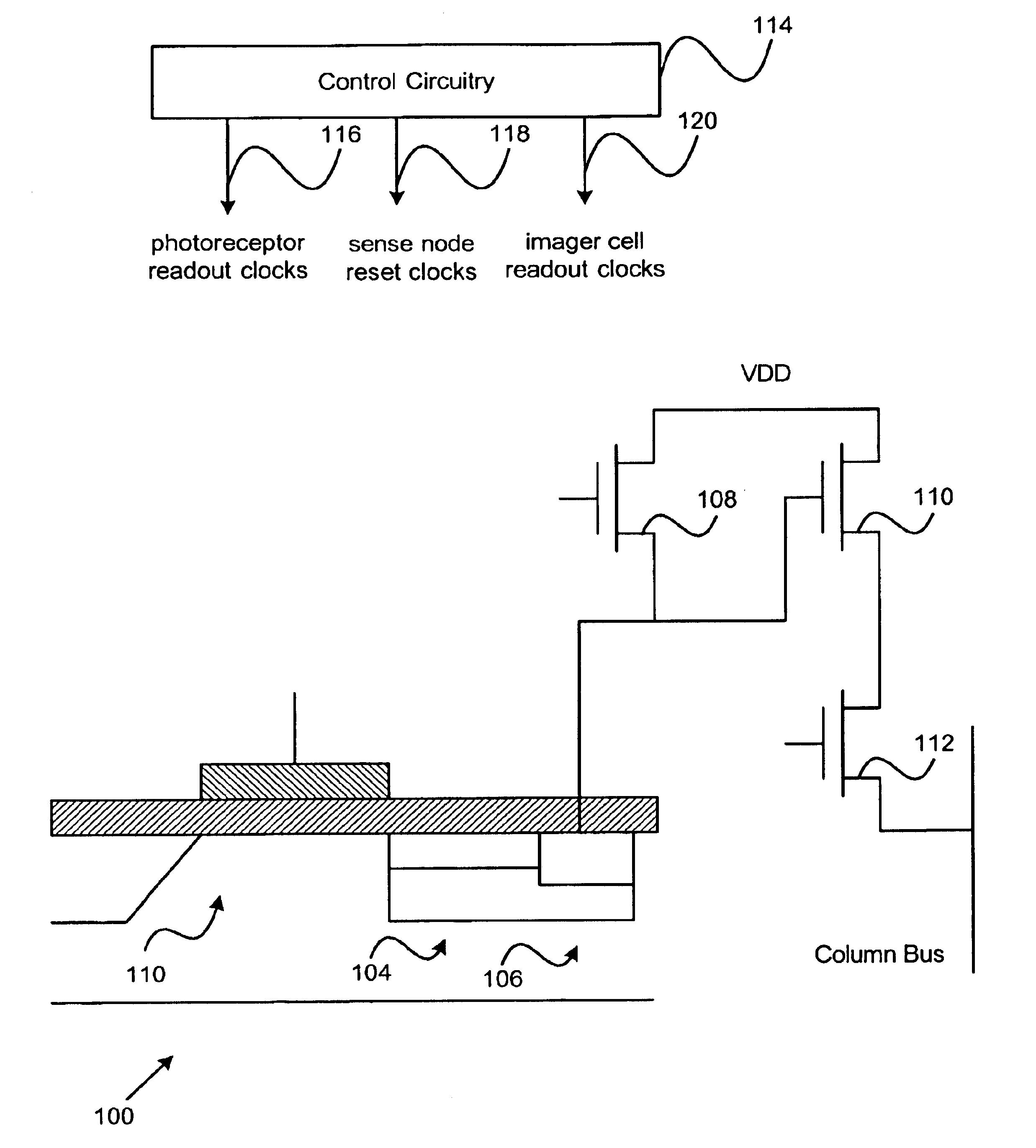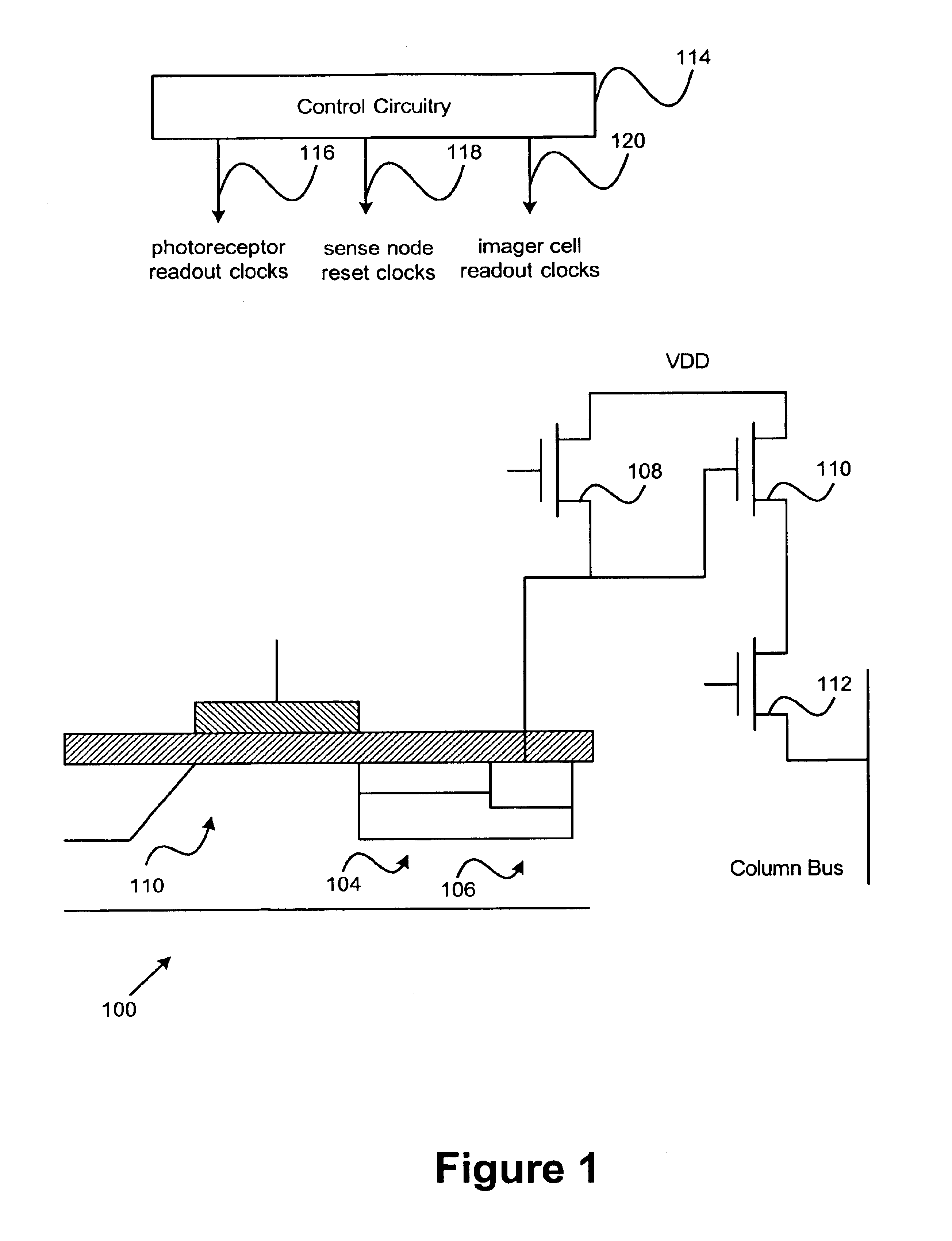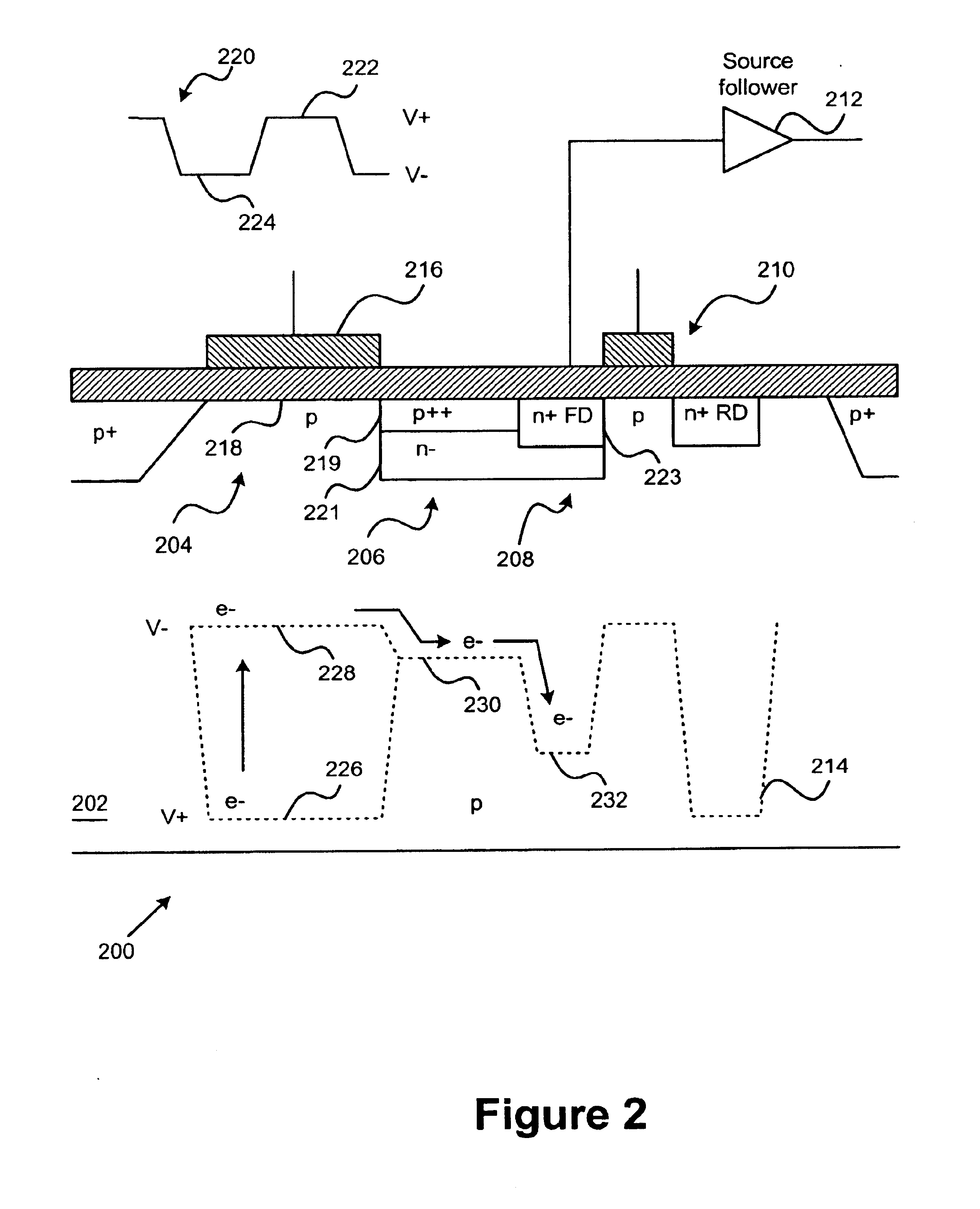Imager cell with pinned transfer gate
a transfer gate and imager technology, applied in the field of cmos imager cells, can solve the problems of undesired image alteration during integration and readout, high read noise, prior photoreceptor cells were not tailored to provide adequate response over a wide range of light levels, etc., to achieve enhanced blue light response and low noise
- Summary
- Abstract
- Description
- Claims
- Application Information
AI Technical Summary
Benefits of technology
Problems solved by technology
Method used
Image
Examples
Embodiment Construction
[0027]With regard first to FIG. 1, an imager cell 100 (descried in more detail below) includes a photoreceptor 102, a transfer gate 104, and a sense node 106. A reset transistor 108 is provided to reset the sense node 106, and an output amplifier 110 provides sense node buffering when the sense node 106 is readout to the column bus through the select transistor 112. Also illustrated in FIG. 1 is control circuitry 114 that produces photoreceptor readout clocks 116, sense node reset clocks 118, and imager cell readout clocks 120. The control circuitry 114 may generally be implemented as a conventional CMOS imager controller, except with regard to the operating modes described in more detail below and with regard to the applicable integration voltages that setup preselected charge capacity levels in the photoreceptor 102.
[0028]Turning next to FIG. 2, that figure presents a more detailed view of an imager cell 200. The imager cell 200 is formed in a p-type substrate 202 and includes a p...
PUM
 Login to View More
Login to View More Abstract
Description
Claims
Application Information
 Login to View More
Login to View More - R&D
- Intellectual Property
- Life Sciences
- Materials
- Tech Scout
- Unparalleled Data Quality
- Higher Quality Content
- 60% Fewer Hallucinations
Browse by: Latest US Patents, China's latest patents, Technical Efficacy Thesaurus, Application Domain, Technology Topic, Popular Technical Reports.
© 2025 PatSnap. All rights reserved.Legal|Privacy policy|Modern Slavery Act Transparency Statement|Sitemap|About US| Contact US: help@patsnap.com



